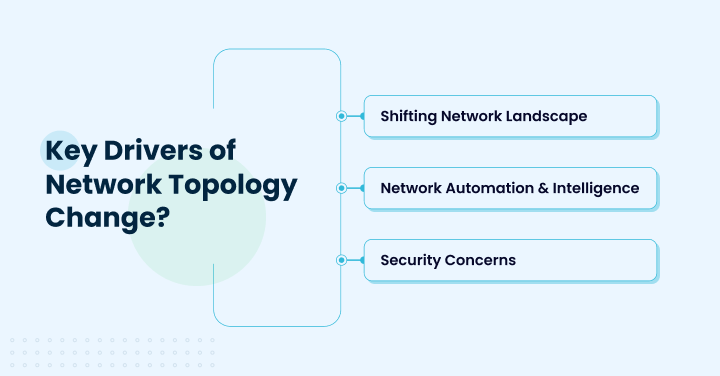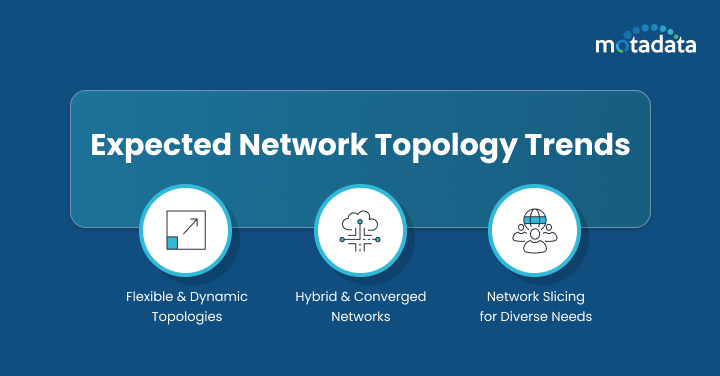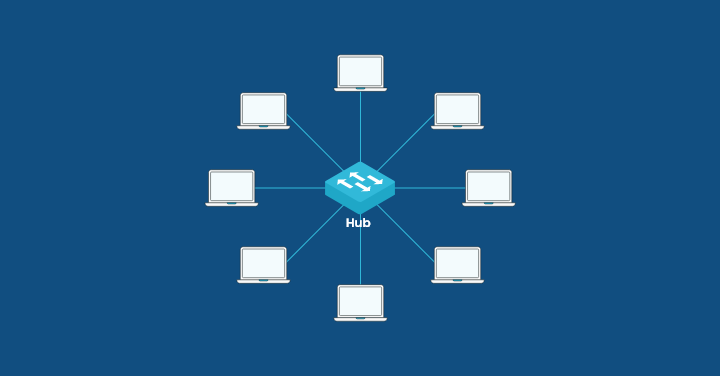During the unprecedented events of 2020, many businesses adopted cloud services and became reliant on digital technologies to run day-to-day operations.
Analyzing the profits of digital companies, many more adopted the same practice, but things started turning complex. Thus, to make things easier, the critical role that digital infrastructure played also involved the support of networking.
Without the proper structure of a network, adequate communication and resource sharing among connected devices is impossible.
Emerging technologies and applications soon drove the growing need for strong network connectivity from a single node to a single cable.
The Internet of Things (IoT), cloud computing practices, Artificial Intelligence (AI) and Machine Learning (ML) applications, and Virtual Reality (VR) were the few factors that played a key role in increasing demand for strong network connectivity.
Even Augmented Reality (AR) demands high-bandwidth networks to deliver a smooth user experience.
In modern networking, network topology is crucial, whether small or extensive.
This practice allows businesses to create a communication path or blueprint that will help them track root nodes; data travels, network design, physical connections, and how different new devices communicate and share resources.
However, traditional network topologies like bus topology aren’t enough to meet these growing demands since they lack resilience, flexibility, and scalability.
Hence, network topologies are evolving to become more flexible, scalable, and safe.
Let us discuss some key drivers of network topology change, future trends you can expect, and their impact.
Further, we will pen down some of the significant challenges and considerations that different types of topologies bring and how to prepare for them in advance.
What are the Key Drivers of Network Topology Change?
The three key drivers vital to making network changes in the whole network focus on bridging the gap between the digital and physical worlds.
Organizations are finding it hard to manage the growing demands of traditional practices.
Hence, they seek the right setup to easily manage networks and incoming and outgoing traffic and ensure secure data transmissions.
1. Shifting Network Landscape:
In the networking world, nothing is constant. We have moved from smaller networks to large networks where data transfers are constantly on the move.
Various wireless technologies like Wi-Fi 7 have also come into practice to guarantee excellent speed, point connection, capacity, and latency, making it a perfect solution for VR, AR, and 4K streaming applications.
The convergence of wired and wireless networks also pushes topologies to evolve. With the implementation of Software-Defined Networking (SDN), organizations can control and manage wired and wireless network resources from a central location and meet user demands in real time.
Further, by putting compute and data storage closer to data sources, edge, and fog computing are redefining the structure of network infrastructure and cutting down on latency and bandwidth usage.
These technologies cannot be managed with traditional topologies but demand a more distributed topology with intelligence and processing capabilities.
2. Network Automation and Intelligence:
The development of machine learning and artificial intelligence practices has simplified managing topologies. These technologies include self-healing capabilities, automated optimization of the data packets, and predictive analytics features that allow businesses to track real-time traffic and anomalies.
Further, they help enhance the overall user experience by automatically optimizing and reducing downtime.
Tools like Intent-Based Networking (IBN) also automate network management processes, reduce manual errors, and guarantee alignment with business goals.
In short, using these tools, businesses can quickly map out and track how networks are laid out and what they require at any given time.
3. Security Concerns:
Cybercrime is constantly rising, and traditional network security practices are no longer enough to halt it. Modern networks with robust security features and response capabilities have become essential.
The evolving topologies must be able to protect applications and data against complex attacks. Hence, incorporating features like access control, encryption, and intrusion detection systems is highly recommended.
Network segmentation and zero-trust security approaches are also essential to modern topologies. Network administrators can constantly control and verify each device and user’s identity with zero-trust models.
Secondly, the network segmentation approach limits breaches from spreading and provides complete protection.
Expected Network Topology Trends
In the coming years, you might notice remarkable changes in how computer networks are set up.
Let us discuss some of the expected trends in topology that you may observe in the near future.
1. Flexible and Dynamic Topologies:
IoT is an emerging technology that is getting widely accepted by people worldwide for its immense power and capabilities. With IoT, users can connect with each other at any time or place without any hassle.
Partnering with an iot software development company can help businesses leverage these capabilities to create innovative and efficient solutions tailored to their needs.
Thus, more and more network architectures are being developed to meet the specific requirements of different organizations.
Managing such a vast network can be extremely challenging with traditional network topologies. This is why the use of SDN and NFV technologies is coming into play.
These smart technologies enable programmable networks to adapt to the changing user demands and traffic patterns easily.
This flexibility in network topologies will allow administrators to cut down on latency, improve performance, and guarantee effective management of resources.
Further, tree-based topologies can be built using decentralized dynamic topology control methods and used in applications where performance is crucial.
In fact, implementing AI and ML techniques in self-configuring and self-optimizing networks can reduce human errors and allow team members to autonomously modify configurations, track changes in the traffic, and identify problems in real time.
2. Hybrid and Converged Networks:
Soon, there will be more hybrid network topologies for it will allow business to create their systems as per their need.
A hybrid network combines several different network technology types to produce a coherent and flexible architecture.
Hence, for an efficient network environment, it is best to integrate wired and wireless technologies.
This integration will not only offer high speed but also make it easier to switch easily between devices without compromising performance.
It will allow integrating various network technologies, including LAN, WAN, Wi-Fi, and cloud networks. In fact, it can be highly advantageous for educational institutions because they facilitate remote and on-campus learning.
Further, mesh networks will provide more redundancy and greater coverage as their nodes are interconnected and data can be easily routed via several paths.
Since each node is connected to many more, generating numerous channels for data transfer, guarantees network reliability even in the event of a node failure. It will not only remove single points of failure but also enable self-healing to keep the network operating continuously.
3. Network Slicing for Diverse Needs:
Another expected trend will be network slicing which will become quite popular and beneficial for IoT applications and mission-critical services.
Through network slicing, certain applications and services can be virtualized into separate network segments that function as separate entities with unique security, reliability, and performance attributes.
Ensuring that multiple applications may live on the same physical infrastructure without interference will be its goal.
Network function virtualization, or NFV, also allows network functions to operate on virtualized infrastructure by separating them from hardware. It will aid in reducing expenses and quick rollout of new services.
The Impact of Evolving Network Topologies
The evolution of network topologies will have a big impact on network efficiency and performance. Mesh network setups might make networks more reliable.
But other expected trends can be tricky and can mess things up. Hence, it is recommended to keep a close eye on all actions.
We have gathered insights from different sources and come to a conclusion on how the evolving network topologies can impact the future.
1. Improved Network Performance:
One of the biggest advantages of evolving network topologies is they will offer higher bandwidth and low latency that will help in delivering seamless user experience at a large scale.
In fact, the integration of edge computing, wireless technologies, and other practices will be going to make the transmission process much simpler and more efficient.
Users can stream videos and respond to players at a faster pace, particularly in gaming applications where quick response time matters the most.
Further, the automation feature in network management will help improve resource usage, cost savings, and overall performance of the network.
Network Topology diagrams also play an important role for they enable those in charge to identify any problems slowing down the system.
Further, it helps analyze traffic flows and make adjustments to network structure to make it function more smoothly.
Businesses can also increase data transfer speeds and reduce latency by implementing an efficient system, resulting in improved user satisfaction and operational efficiency.
2. Enhanced Security:
It is highly essential to ensure that your chosen topology in the modern environment is highly appropriate when it comes to network safety.
For example, in the star topology, where there are fewer entry points for outsiders, the chances of breaches are less as everything is connected to one central hub.
But with mesh topologies and different network topologies, in terms of security, administrators need to take proper care and implement strict actions.
The evolving topologies are expected to offer more granular control that will eventually improve the security posture.
Even the implementation of the zero-trust models, advanced threat detection, and segmentation capabilities can reduce breaches and detect potential threats in real time.
Using AI and ML practices, network administrators will be able to better monitor all the traffic, track single point of failure in ring topologies, identify performance issues, and implement mitigation measures.
Thus, preventing your business from potential damage, network issues, and data leakage.
3. Simplified Network Management:
Tasks related to network management can be automated to save operating expenses and increase flexibility.
IT teams may concentrate on key projects by using IBN and other automation technologies to simplify deployment and maintenance.
This will allow team members to focus on other critical projects and reduce the time and effort necessary for performing routine tasks.
Simplified network management further guarantees that networks can swiftly adjust to changing business needs while lowering the possibility of human error.
This flexibility is essential in the evolving technology environment of today, where being able to react quickly to changes can give an advantage over competitors. These actions will eventually help enhance performance as well as user satisfaction.
Challenges and Considerations
The evolution of network topologies will undoubtedly bring great benefits in the long run, but there are also certain tricky parts.
Let us discuss some of the challenges of network topology trends.
1. Standardization and Interoperability:
A major challenge in changing network topologies is the requirement for industry-wide standards.
The ability of various network technologies to effectively integrate and function together is ensured by setting up some basic standards.
Without defined protocols and frameworks, implementing and administering sophisticated network topologies can be challenging, and it is prone to interoperability problems.
Undoubtedly, the new tech will make things easier in different areas, but without proper standardization, you can’t last long and boost efficiency.
2. Security Concerns in a More Dynamic Environment:
The more dynamic and programmable your networks become, the higher the risk of breaches. Certain new security vulnerabilities will emerge in the future.
Hence, looking after the security of NFV, SDN, and other programmable network technologies is essential. Strong security protocols, real-time monitoring, and frequent upgrades are required to safeguard against possible attacks and vulnerabilities.
3. Skillset Gap for Managing New Technologies:
As new technology emerges and networks become more complex, a rising shortage of skills is required to maintain them. Advanced network topologies demand certain knowledge and skills to manage and maintain.
Network administrators must thoroughly understand various network topologies and their applications.
Employers can invest in training initiatives that teach their IT staff the necessary skills to close this skill gap.
Further, network administrators can more easily identify and resolve network problems using network topology mapping software, improving their ability to manage and observe the selected topology.
Additionally, network managers will need to expand their expertise as wide-area networks (WANs) become more prevalent and cloud services are integrated into every aspect of life.
To maintain optimal performance, they will require a solid understanding of logical network topology, physical topologies, virtualization, cloud, and WAN design for different purposes.
Conclusion
In the coming period, the correct network topology will be characterized by security, intelligence, and adaptability across the entire network.
You might encounter significant changes in the architecture and management systems that will be soon driven by advanced technologies, such as artificial intelligence, SDN, Wi-Fi 7, and even edge computing.
With these developments, you can avail yourself of several benefits, such as increased security, easier management, and better performance.
Flexible and dynamic topologies will make adapting to users’ changing demands much easier.
AI and ML techniques will autonomously modify configurations and reduce human errors. Hybrid topologies and mesh networks will offer more redundancy.
Further, network slicing will allow users to virtualize different applications and services into separate segments.
As the number of different network topology continue to change, organizations face issues with standardization, security, and employee recruitment.
Your team will fail to meet the business objectives without the right expertise and knowledge. Thus, it is another key challenge that requires proper attention and time.
Tackling these obstacles and adopting cutting-edge technologies might seem easy, but enterprises must construct robust and effective networks that will fulfill the requirements in the future.
FAQs:
Businesses need to make an additional effort to stay ahead in network topologies.
In addition to ensuring the function effectively with emerging technologies like 5G and IoT, they also need to keep up with the increasing demand for greater flexibility and scalability.
Furthermore, maintaining robust security protocols and effectively overseeing operations in constantly evolving environments can be difficult.
SDN is poised to revolutionize network topologies by isolating the control and data components.
This separation provides a centralized location for configuring and monitoring devices, facilitating real-time resource allocation, improved traffic management, and fast maintenance.
This increases the network’s functionality and adaptability since network administrators may customize their systems to meet specific requirements and ensure traffic moves through the system when needed.
Network configuration will significantly shift in response to the rising number of IoT devices.
Numerous connected devices will require various means of communication, which networks will need to provide.
Monitoring network health will be essential to ensure that data flows quickly and that connections remain seamless.
As connected devices continue to change things up, administrators will be busy setting up systems that can handle more traffic and adapt.









